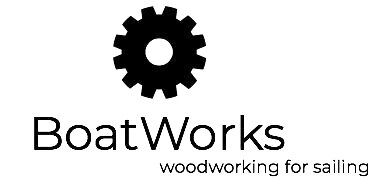Sharp PA-1050. New ribbon for thermal typewriters
I guess I am a bit late to this game of thermal typewriters. When I researched my machine I found articles and typecasts of Ted Munk and Joe Van Cleave from a decade ago.
Well, better late than never.
The reason I picked this machine was my need for a very silent typer. And one which will not cause me troubles when flying. Call it my bad luck but on my recent flights to Germany security control was a PITA, both in Sweden and in Germany.
Imagining that I need to explain myself to carry a contraption like Erika 5 on a plane just gives me a rush.
Sharp PA-1050, on the other hand, looks like an old laptop and - being mostly plastic, with standard D-cell batteries - should not cause any alarm-bells ringing.
Called baby-wedge by Ted Munk, you can see why from a side:
Mine came with manual (in Swedish), a few cassettes and an additional RAM-module which extends its internal memory and enables storing several A4-pages inside, to be printed later.
I was saving these cassettes for a later, typing on thermal paper instead (no cassette needed then). My favorite thermal paper became this Brother one:
It gives very nice, dark print and I cannot find anything to complain about but… I want to type on my all-time favorite paper, Sweden-Bond!
It is slightly off-white and has a delicate texture with a water mark. On picture below it is an ark on top, laying on Brother thermal paper ark (extra-white).
Well, thermal transfer ribbons are still made today and widely used. We use Brother printers for labels etc, thermal ribbon comes in plenty of sizes and lengths. The challenge is that my machine uses 6mm wide ribbon and the narrowest one sold today is 9mm and it is just 10m long.
The cassette can be opened easily. I checked how things are routed inside and how wide the new spool should be.
I could not help reading the old ribbon left in the cassette. Seems that the last time this machine was used was 1995:
The choice of bulk ribbon is very wide. I bought one of these and started making a jig to cut it. The idea was simple: a row of blades through which the tape will be drawn, resulting in simultaneous cut of many 6mm pieces.
It kind of worked for a while but inevitably was derailing after a while.
The tape is too thin and too fragile for that. Besides - so many threads become unmanageable.
I dumped the idea and tried something more radical: cutting on a lathe!
To keep the ribbon from accidental unwinding I taped it with masking (paper) tape.
It is mounted on a lathe so that when it turns and meets the knife it is “winding itself”.
I made the knife from rotary cutter blade, mounted on a simple shaft.
The trick is to use as thin blade as possible - at the same time as stiff as possible so that it will not diverge to side during the cut.
I could not avoid some problems:
first cut became too narrow because the blade diverged from an initial line (yellow arrow)
second cut was too abrupt: knife movement vs rotation speed (blue arrow)
the third cut yielded acceptable results but not perfect yet.
Unmatched rotation vs knife movement caused the ribbon to heat and loose parts of the resin, visible as reflective stripe above. It is a Mylar-base without the resin which is showing through.
Once I got these parameters dialed-in I continued cutting with no further problems.
Next step was to wind the ribbon onto cassette spool.
It is a bit fiddly to mount this back into the cassette. Routing this tape through all nooks and crannies is taking time but can be done with patience.
Finally time for test-type!
Well, it works!
So there is hope for these cool “baby-wedges” out there!
The procedure is quite straightforward and after going through all possible mistakes it becomes a routine. As always with everything.
At least the material is not expensive: I bought a bulk ribbon for 25 USD, it can yield around 30 such cassettes. Maybe more.
So if something goes wrong - stop crying and just move on.



















